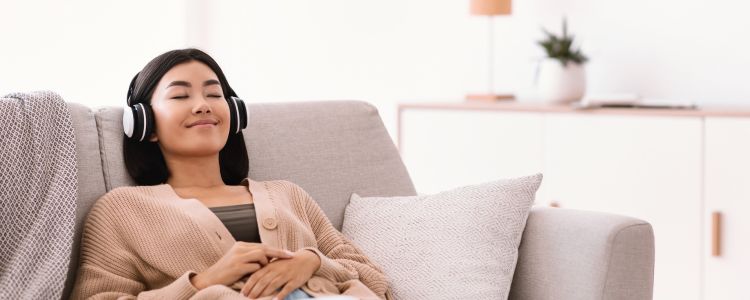
Helps improve nervous system regulation in children and adults to support many symptoms and conditions.

Backed by clinical trials and real-world evidence, and informed by Dr. Stephen Porges’ Polyvagal Theory.

Enhances and accelerates the impact of other therapies, such as CBT, EMDR, SE, IFS, and neurodevelopmental treatments.
How does the Safe and Sound Protocol work?
The music of the SSP has been filtered through a patented, evidence-based algorithm that highlights specific sound frequencies that help regulate the autonomic nervous system and stimulate the vagus nerve. What this means for you and your clients:

Providers report that the SSP “opens up” their clients and relaxes their defenses, improving accessibility.

As a result, clients often experience quicker progress, becoming more engaged in therapy.

The SSP helps accelerate results and improve therapeutic outcomes.

Once integrated, the SSP often becomes an essential part of a clinical approach.
Impactful, long-lasting results for your clients are possible.
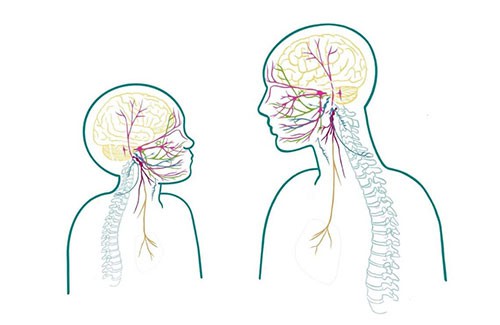
The Science of Safety
By sending cues of safety through specially filtered music, the SSP engages a system of muscles and nerves that support social engagement, stimulating the vagus nerve. This opens the door for other therapies to become more accessible, impactful and accelerated.
Dive into the science behind the Safe and Sound Protocol!
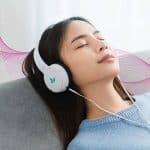
Tunes that retune.
The SSP uses a wide variety of music, including some that you may already be familiar with. All the music in the SSP playlists are thoughtfully sequenced and filtered through the patented, evidence-based algorithm backed by decades of scientific research.
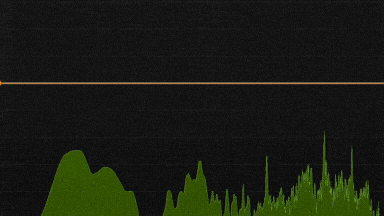
This visual shows full-spectrum sound frequencies in a typical, unfiltered clip of popular music.

Here is the exact same clip — after being filtered through the SSP’s algorithm.
What does the music sound like?
The SSP contains several vocal and non-vocal music playlists and levels of filtration to help you support client engagement and participation in the listening process. Multiple vocal and non-vocal playlists allow the SSP to be accessible to many populations, and allow you to customize delivery for your client.
Everyone can benefit from
nervous system regulation.
nervous system regulation.
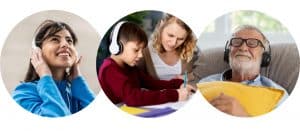
The SSP is suitable across the lifespan, and has been designed to complement a variety of therapeutic approaches and modalities.
SSP providers are psychologists, therapists, social workers, occupational therapists, speech therapists, school counselors, and more.
The SSP supports many client populations and may be helpful in reducing symptoms and supporting overall health and resiliency for people seeking support for:
- Depression and anxiety
- Neurodevelopmental differences, such as autism, hyperactivity and attention
- Learning difficulties
- Auditory and other sensory processing differences
- Trauma history
- Sleep
- Neurological changes
- Other challenges related to autonomic dysfunction, such as eating difficulties, gut health, and more
The SSP can be combined with and is supportive of other therapies, including:
- Neurodevelopmental treatment, such as occupational therapy, play therapy and sensory integration therapy
- Other forms of mental health and trauma therapies, such as Eye Movement Desensitization and Reprocessing (EMDR), Somatic Experiencing (SE), and Internal Family Systems (IFS)
- Cognitive behavioral therapy (CBT) and other forms of talk therapy (e.g. DBT, MBCT, etc.)
The SSP is trusted by these practitioners and professional organizations as part of their healing toolkit.






Experience the benefits of the SSP in your practice.

Anxiety
Many clients who experience the SSP report fewer symptoms of anxiety

Depression
Many clients who experience the SSP report fewer symptoms of depression

Trauma
Many clients who experience the SSP report fewer trauma-related symptoms

Psychosocial
Caregivers of children who experience the SSP report fewer psychosocial challenges
Together, clinical trials and real-world evidence create a powerful, holistic evidence base for Unyte programs.

Many clients who experience the SSP report fewer symptoms of anxiety.
85% of clients reported an improvement in symptoms.

Many clients who experience the SSP report fewer symptoms of depression.
81% of clients reported an improvement in symptoms.

Many clients who experience the SSP report fewer trauma-related symptoms.
87% of clients reported an improvement in symptoms.

Caregivers of children who experience the SSP report fewer psychosocial challenges.
84% of clients reported an improvement in symptoms.
Real-world evidence. Real change.
Discover the science behind the transformative power of the Safe and Sound Protocol. Explore real-world case studies demonstrating the wide-ranging impacts of nervous system regulation. View all case studies →
Clinical Trials
The SSP’s effectiveness has been proven in a wide range of clinical studies, including clinical trials involving children and adults with autism. View all research →
Download: White Paper
Nervous system regulation through listening: The science and applications
In this white paper, we dive into the profound impact of music-based interventions, sound therapies and listening therapies.
In an exploration of science, clinical research and real-world evidence, we aim to enrich your familiarity with bottom-up therapies and how they can complement traditional, top-down approaches to create holistic healing strategies grounded in physiological safety and autonomic regulation.

Deliver from almost anywhere to anyone with the Unyte Health app.
Help more clients — easily and seamlessly
The SSP is delivered through a user-friendly app-based platform, compatible with Android and iOS devices.
Delivered either in-person or remotely, clients experience the SSP through over-the-ear headphones via the Unyte Health app. Providers have full control, and can manage client access, deliver listening sessions and monitor progress through MyUnyte, the intuitive platform.
“Safe, sound, and simple. The level of ease and simplicity that comes with SSP digital delivery contributes to keeping the experience within reach of the nervous system’s capacity to safely engage.”
— Deb Dana, LCSW

MyUnyte
An intuitive online client management dashboard. Create new accounts, choose SSP programs and pathways, and more in just a few clicks.
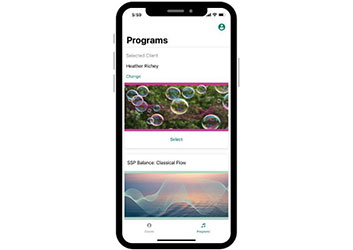
Unyte Health App
Facilitate all your clients’ listening through the Unyte Health app, available to both providers as well as clients for remote delivery.

Unyte Community
We’re here to support you! Webinars, technical and clinical support, resource articles, online communities, and more are available to all SSP providers as part of your subscription.
Get Started Today!
You must be a qualified professional to deliver the SSP. SSP Training and Certification covers both theory and the practical application of the Safe and Sound Protocol. Once certified, a subscription is required to deliver the SSP to your clients.
Have questions? We’re here to guide you!
Book a free, personalized consultation or call us directly at 1-866-594-9453.
^
Annual Monthly Subscription
Pay monthly
$139/month
12-month subscription, billed monthly, auto-renewal.
+ $349 $249 one-time purchase of SSP Training and Certification
Annual Upfront Subscription
Pay annually and save!
$125/month
$1,499 today, billed annually, auto-renewal.
+ $349 $249 one-time purchase of SSP Training and Certification
| What’s Included |
Start with Training Only |
Training and Subscription Bundle |
|---|---|---|
| Online, on-demand learning | ✓ | ✓ |
| Special pricing on SSP Training and Certififcation | ✓ | |
| Access to deliver the SSP after becoming certified | Subscription required before you can deliver the SSP | ✓ |
| Access to MyUnyte | ✓ | ✓ |
| Unyte Assessments and Unyte Resources | Limited | ✓ |
| Unyte app for in-person and remote delivery | ✓ | |
| Live and online support, including introductory provider meeting | ✓ |
We’re Here To Help!
Discover how the Safe and Sound Protocol can create lasting change for your clients.













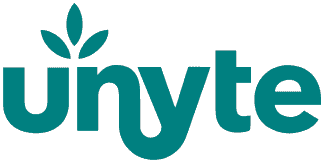 © 2025 Unyte Health US Inc.
© 2025 Unyte Health US Inc.